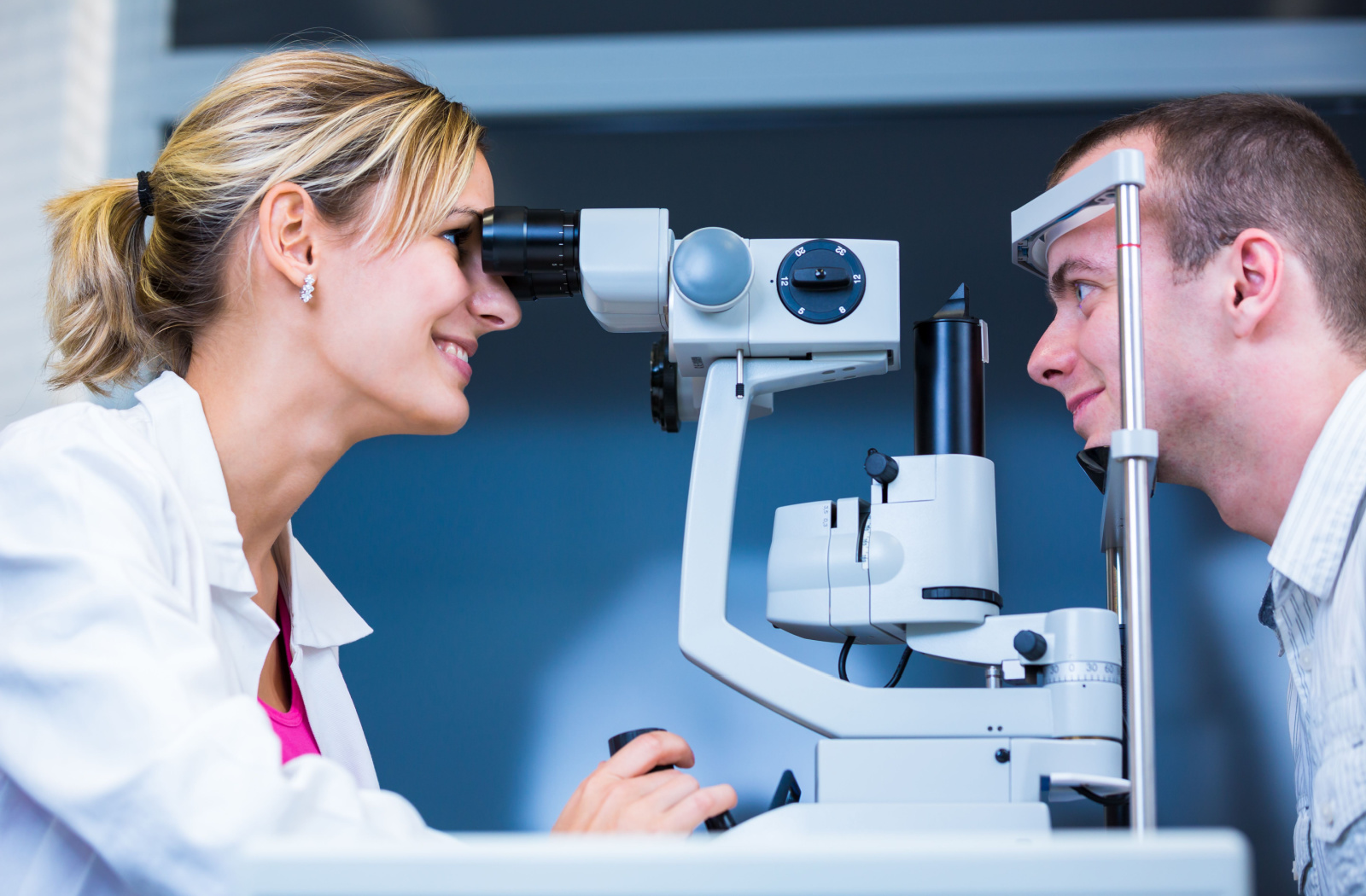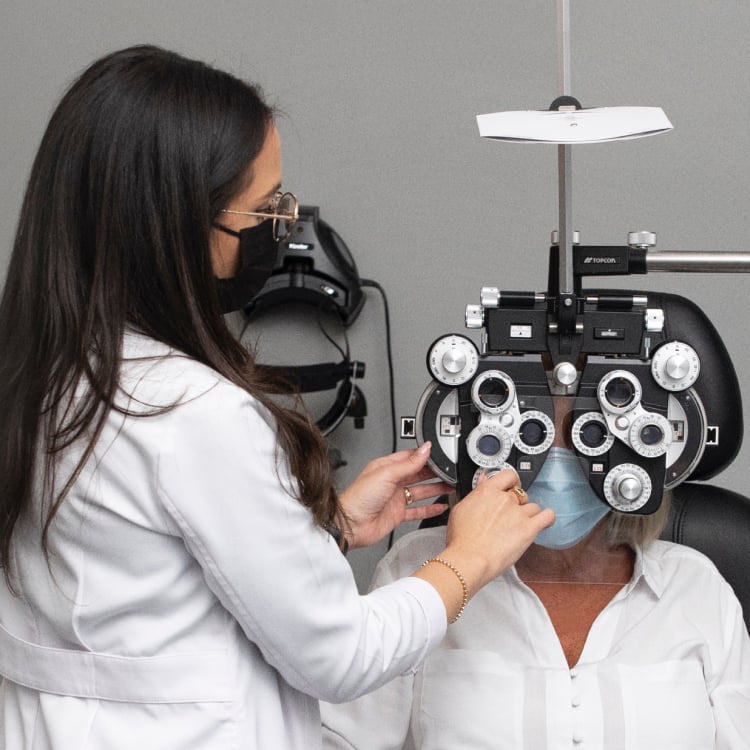Dependable Eye Doctor for All Your Vision Needs in Riverside
Dependable Eye Doctor for All Your Vision Needs in Riverside
Blog Article
The Comprehensive Eye Exam: What to Expect During Your Visit to the Eye Doctor
A check out to the eye doctor for a detailed eye test is more than a regular check-up; it is an essential step in guarding your visual health. What precisely occurs throughout the eye health evaluation, and how does it influence the prescription process?
Initial Appointment
The initial assessment during an eye exam acts as an essential foundation for comprehending a client's visual health demands. This phase establishes the tone for the whole exam process, enabling the eye doctor to gather crucial details regarding the person's case history, lifestyle, and certain vision worries. By diligently assessing any pre-existing problems, medications, or previous surgical treatments, the eye care professional can customize the assessment to resolve private needs effectively.

In addition, the preliminary examination is a chance for individuals to articulate any type of concerns or concerns, cultivating a collaborative partnership with their medical care copyright. This interaction not only ensures that the patient feels educated and comfy but also empowers them to take part actively in their eye health monitoring. Collectively, these discussions enable the eye doctor to create a tailored exam strategy, ensuring optimal treatment and exact medical diagnosis.
Aesthetic Acuity Examination
Kicking off the core components of an eye exam, the aesthetic skill test is created to analyze the sharpness and clarity of a patient's vision. This vital evaluation aids establish exactly how well a person can determine letters or symbols at a standard range, usually utilizing a Snellen chart (Eye Doctor). The chart consists of rows of letters that decrease in dimension from leading to base, with the person placed at a customary distance of 20 feet
Throughout the examination, the patient is asked to cover one eye and review out loud the smallest line of letters they can see plainly. This process is duplicated for the various other eye. The outcomes are tape-recorded as a portion, with 20/20 vision suggesting normal aesthetic skill-- where the person can see at 20 feet what an individual with regular vision can see at that distance.
The aesthetic skill test additionally determines possible refractive mistakes such as myopia, hyperopia, or astigmatism, which could require restorative lenses. By developing a baseline of visual performance, the test is an essential diagnostic tool that helps the eye treatment professional in developing an ideal treatment strategy customized to the individual's special aesthetic requirements.
Eye Health Evaluation
Adhering to the visual skill test, a comprehensive eye health evaluation is conducted to ensure the total health of the eyes. This vital segment of the eye exam involves a complete analysis of both the inner and external structures of the eye.
Through the use of ophthalmoscopy or fundus photography, the retina, optic nerve, and blood vessels are diligently reviewed. In lots of instances, student blog here dilation is performed to boost visibility of the inner eye structures, although this may result in temporary light level of sensitivity for the individual.
Furthermore, intraocular stress is gauged to evaluate for glaucoma risk. This is generally done utilizing tonometry, which can detect elevated pressure degrees that might suggest potential damage to the optic nerve. Collectively, these assessments form a detailed evaluation to maintain eye wellness.
Refraction and Prescription
Refraction is a sophisticated procedure carried out by eye care specialists to determine the accurate lens power required to remedy refractive mistakes such as myopia, presbyopia, hyperopia, and astigmatism. The objective of this procedure is to evaluate how light bends as it passes via the eye, permitting the professional to determine whether corrective lenses are needed for improved aesthetic acuity.
During the refraction procedure, the patient is asked to browse a phoropter, a gadget which contains different lenses. The practitioner will systematically alter these lenses and ask the person to compare clearness between choices until the most effective feasible vision is accomplished. This treatment is vital in crafting an exact prescription that specifies the proper lens power for eyeglasses or contact lenses.
The prescription stemmed from this treatment not only maximizes vision yet additionally acts as a structure for selecting appropriate restorative eyeglasses. It is essential to make sure that prescriptions are routinely upgraded, as adjustments in vision can happen gradually, stressing the relevance of regular eye assessments. This precise interest to detail assists preserve clear, comfy vision in every day life.
Follow-Up Referrals

Throughout a follow-up see, the eye doctor will perform a series of tests to evaluate aesthetic acuity and check for any kind of adjustments in vision that could demand an update to the prescription. In addition, the follow-up gives an opportunity to go over any pain or concerns experienced with present eyewear. Changes can be made to guarantee comfort and effectiveness, whether with lens article alteration or framework modifications.
For people with continuous problems such as glaucoma, diabetes-related eye concerns, or macular degeneration, more frequent follow-ups might be essential. These appointments are important for handling and potentially slowing the progression of eye condition. Complying with these referrals can significantly add to keeping visual health and wellness and avoiding long-term complications.
Conclusion
The comprehensive eye test is a necessary procedure for maintaining visual health, including an in-depth evaluation of clinical history and vision worries. Secret parts include the visual skill examination, which assesses vision quality, and the eye health assessment, which takes a look at the total problem of the eyes. Refraction tests aid establish the precise lens prescription necessary for optimum vision modification. Follow-up suggestions provide guidance for continuous eye treatment, making sure that any kind of possible issues are addressed without delay and efficiently.
A visit to the eye medical professional for a thorough eye test is more than a routine exam; it is an important action in securing your aesthetic wellness.Kicking off the core parts of an eye assessment, the aesthetic skill examination is created to analyze the sharpness and clarity of a person's vision.Following the aesthetic acuity test, an extensive eye health and wellness evaluation is carried out to make sure the overall wellness of the eyes. These sees permit the eye care specialist to monitor adjustments in vision, upgrade prescriptions, and analyze the total wellness of the eyes. Secret components include the aesthetic skill test, which evaluates eyesight clarity, and the eye health and wellness evaluation, which analyzes the total condition of the eyes.
Report this page